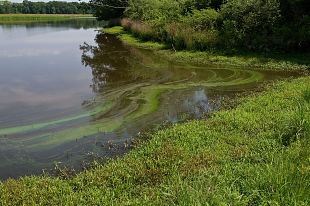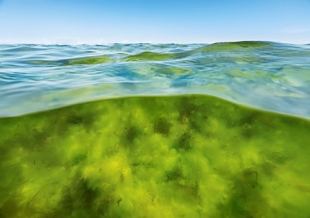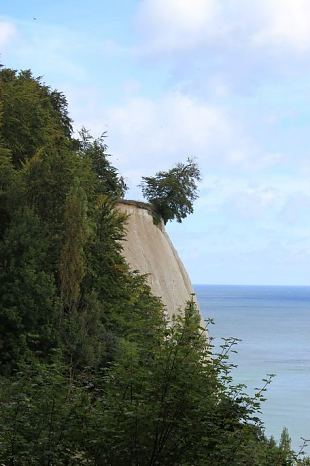 Nutrients: phosphorus and nitrogen Why and when we need to remove these beneficial for plants substances from water and how can we do this? Unfortunately, we create the problems with water pollution, but fortunately, we do have the technologies to solve them, as well Nutrients: phosphorus and nitrogen in water
Nutrients: phosphorus and nitrogen Why and when we need to remove these beneficial for plants substances from water and how can we do this? Unfortunately, we create the problems with water pollution, but fortunately, we do have the technologies to solve them, as well Nutrients: phosphorus and nitrogen in water Cleaner water
in your village and aroundNutrients: phosphorus and nitrogen in water
Why and when we need to remove these beneficial for plants substances from water and how can we do this?
Even if you are not a farmer or gardener and not fond of a lot of plants on your windowsill, still you can remember from school biology that nitrogen promotes plant growth being the part of chlorophyll molecule (photosynthesis, indeed!).
Whereas phosphorus is responsible for transferring energy through the plant. With help of nitrogen plant traps the energy from sunlight (photosynthesis, again) and afterwards phosphorus supports the actual use of this energy (for specialists let us recall adenosine triphosphate or ATP - an important macromolecule working as energy currency for all organisms from the simplest bacteria to humans).
But despite their significance these valuable compounds are water pollutants, when too much nitrogen and phosphorus enter the environment.
| ||
How much is too much?
They say in Estonia (source) that if you are from small place with a number of people from 300 to 1999, then you are not allowed to discharge more than 2 mg/l of phosphorus and 60 mg/l of nitrogen. If you live in a city, where more than 100 000 people are contributing to the pollution, then these limits are 0.5 and 10 mg/l of phosphorus and nitrogen, respectively. However, when you are from the place with less than 300 people, you are lucky to not have the regulation that applies to you. Yet, at least.
What could happen, when we release these nutrients in water in larger amounts? Algae is growing faster than water body can handle. This results in the decrease in dissolved oxygen in water, i.e. not enough oxygen for fish and other aquatic life to survive. Some algae or so-called algae blooms (large amount or accumulation of algae) produce toxins and facilitate bacterial growth that are harmful to people if we bathe there, drink contaminated water or eat tainted fish.
| ||
How can we remove nutrients from wastewater?
Phosphorus: we need to transfer soluble phosphorus to solid phase and to separate solids from liquid. The removal methods are chemical (addition of lime, iron or aluminium salts), biological, combined (chemical and biological) and some others (ion exchange, terrestrial treatment like percolation, infiltration, plant treatment, etc.). Phosphorus is eliminated biologically when bacteria accumulates polyphosphates and then bacteria are removed with the activated sludge waste (excess of biomass). However, chemical precipitation is still the dominating phosphorus removal technology.
Nitrogen: generally bacteria and microorganisms in activated sludge are doing most of the work (removal by the biological process). Usually the removal of nitrogen is done in two stages: nitrification and denitrification. In denitrification in the absence of oxygen bacteria use oxygen from nitrate and nitrite to produce nitrogen (N2).
Unfortunately, we create the problems with water pollution, but fortunately, we do have the technologies to solve them, as well. | ||
VillageWaters Project
VillageWaters suggest most effective wastewater treatment solutions in scattered dwellings households, which use their own, independently operated water purification systems.
Helping Homeowners
Environmentally oriented families and homeowners, who live in scattered dwellings areas, where connecting to larger wastewater plants is not option because rural distances.
Project publications
Information Tool, article base and blog will be linked directly to our website.
See also our Facebook pages

Communication
SYKLI Environmental School of Finland
PL 72, 11101 Riihimäki, Finland
Jari Heiskanen (Chief Web Manager),
phone. +358 50 375 2657,


